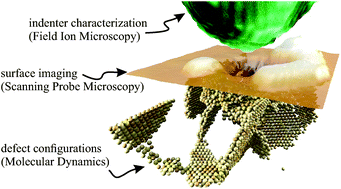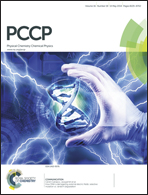Indentation-formed nanocontacts: an atomic-scale perspective
Abstract
One-to-one comparisons between indentation experiments and atomistic modelling have until recently been hampered by the discrepancy in length scales of the two approaches. Here, we review progress in atomic-scale nanoindentation experiments employing scanning probe techniques to achieve depth-sensing indentation and field ion microscopy to permit detailed indenter characterization. This perspective addresses both mechanical (dislocation nucleation, defect structures, adhesion, indenter effects) and electronic (interface, disorder, and vacancy scattering) properties of indentation-formed contacts.


 Please wait while we load your content...
Please wait while we load your content...